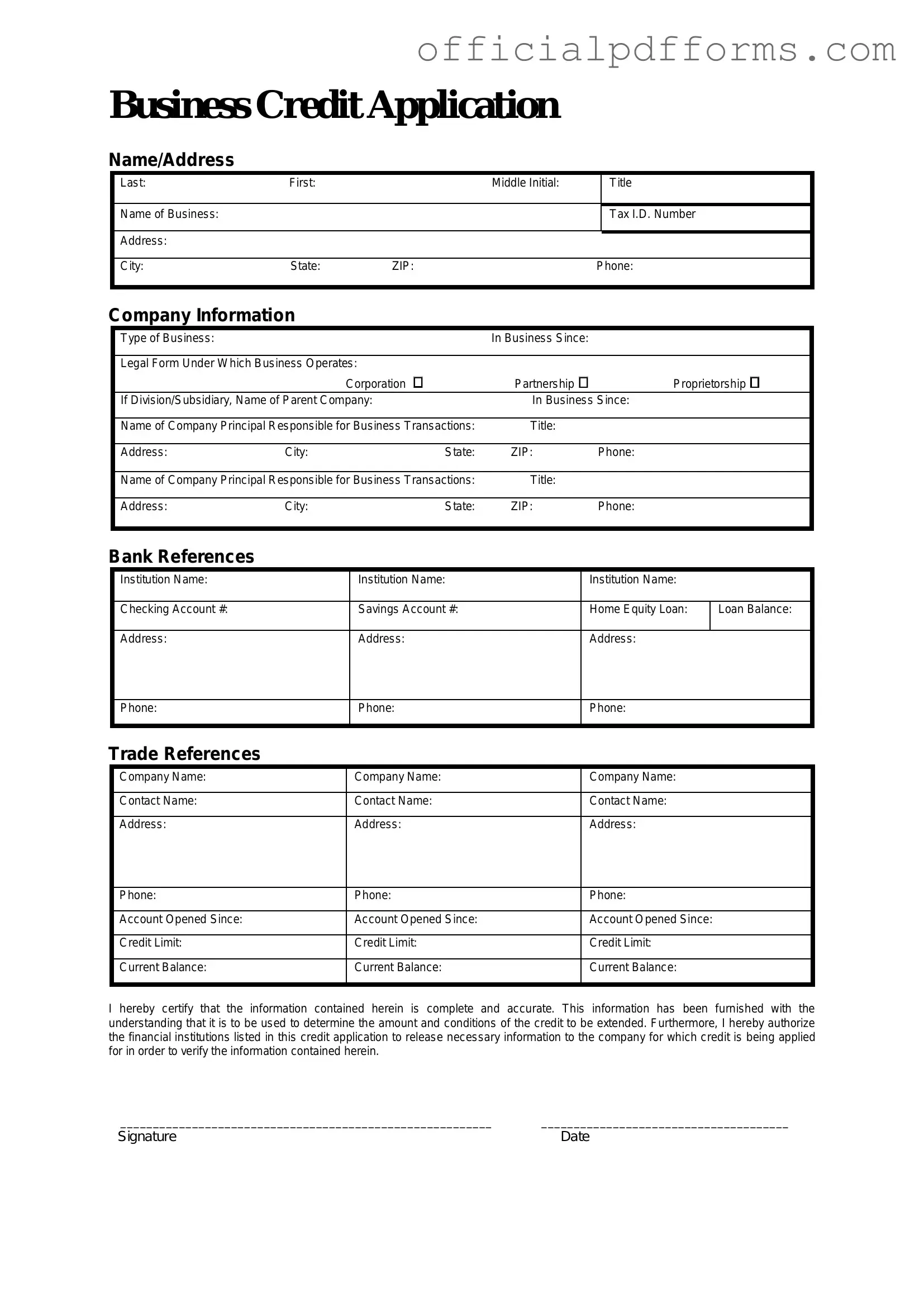A Business Credit Application form is a document that businesses fill out to apply for credit from a lender or supplier. This form collects essential information about the business, including its financial history, ownership structure, and creditworthiness. Completing this form is a crucial step in establishing a credit line or securing financing.
The Business Credit Application form should be completed by authorized representatives of the business, such as owners, partners, or financial officers. It is important that the person filling out the form has a good understanding of the company's financial situation and can provide accurate information.
Common information required on a Business Credit Application form includes:
-
Business name and address
-
Type of business entity (e.g., LLC, corporation, sole proprietorship)
-
Tax identification number (TIN)
-
Business ownership details
-
Financial statements (e.g., balance sheets, income statements)
-
Bank references
-
Trade references
The information provided on the Business Credit Application form is used by lenders or suppliers to assess the creditworthiness of the business. They evaluate the financial health and stability of the company to determine whether to approve the credit application and what terms to offer.
How long does it take to process a Business Credit Application?
The processing time for a Business Credit Application can vary widely depending on the lender or supplier. Generally, it may take anywhere from a few days to several weeks. Factors influencing the timeline include the complexity of the application and the thoroughness of the information provided.
What happens if the application is denied?
If a Business Credit Application is denied, the lender or supplier is typically required to provide a reason for the denial. Common reasons may include insufficient credit history, poor financial performance, or discrepancies in the information provided. Businesses can often address these issues and reapply in the future.
Can I appeal a denial of my Business Credit Application?
Yes, businesses can appeal a denial of their Business Credit Application. This usually involves contacting the lender or supplier to discuss the reasons for the denial and providing additional documentation or clarification that may support a reconsideration of the application.
Is there a fee associated with submitting the application?
Some lenders or suppliers may charge a fee for processing a Business Credit Application, while others do not. It is essential to review the terms and conditions associated with the application to understand any potential costs involved.
How often should I update my Business Credit Application?
It is advisable to update your Business Credit Application regularly, especially if there are significant changes in your business's financial situation, ownership, or structure. Keeping the information current can improve your chances of obtaining credit and maintaining a good relationship with lenders and suppliers.
Business Credit Application forms can typically be obtained directly from lenders, suppliers, or financial institutions. Many organizations also provide downloadable versions of the form on their websites, making it easy to access and complete.
